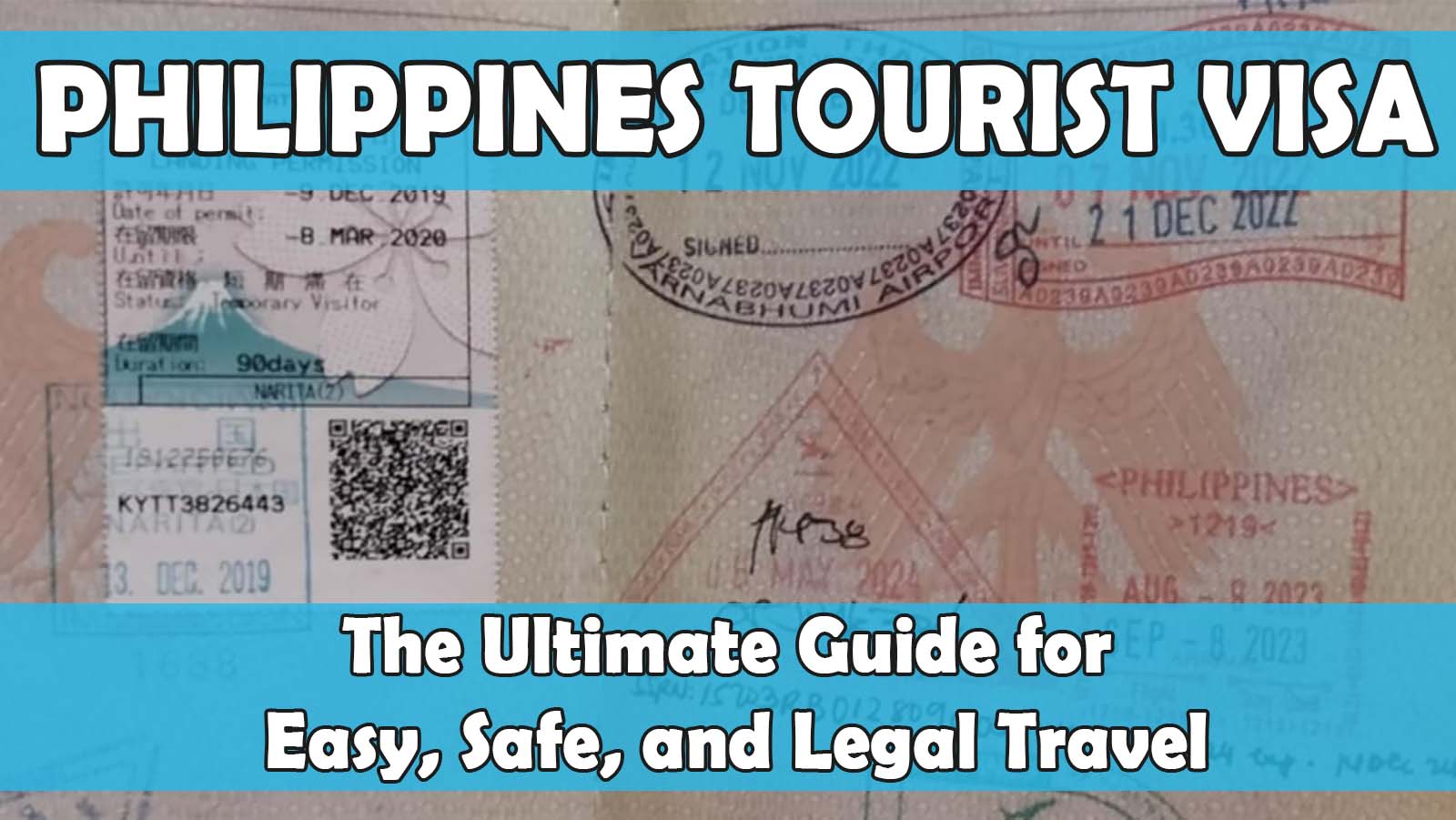Philippines Tourist Visa
The Ultimate Guide for Easy, Safe, and Legal Travel
The Philippines is one of the most beautiful travel destinations in Southeast Asia—famous for white sandy beaches, crystal-clear waters, friendly people, and a welcoming tourism policy. Whether you’re planning a short vacation, a backpacking journey, or a long stay on the islands, understanding the tourist visa rules is essential for a smooth and stress-free experience.
This comprehensive guide covers everything you need to know about the Philippine tourist visa, including visa-free entry, extensions, required documents, long-stay options, fees, overstays, and expert travel tips. Clear, helpful, and perfect for both first-time and returning travelers.
1. Do You Need a Tourist Visa to Enter the Philippines?
Whether you need a tourist visa depends on your nationality. The Philippines has one of the most generous visa-free entry policies in Asia.
Visa-Free Entry (Most Western Countries)
Travelers from countries such as:
-
United States
-
Canada
-
United Kingdom
-
Australia
-
New Zealand
-
EU/Schengen countries
-
Switzerland
-
Japan
-
South Korea
may enter the Philippines without a visa for up to 30 days.
This visa-free entry is sometimes called a temporary visitor visa waiver. It is stamped upon arrival at the airport.
Countries That Require a Visa in Advance
Some nationalities must apply for a 9A Temporary Visitor Visa (tourist visa) before traveling. The application is done at a Philippine Embassy or Consulate.
2. Entry Requirements for Tourists in 2025
Whether you enter visa-free or with a pre-arranged visa, you generally need:
-
Passport valid for at least 6 months beyond your stay
-
Return or onward travel ticket
-
Completed eTravel Form before entering the country
-
(Proof of financial capability sometimes requested)
Philippine Immigration may also ask basic travel questions regarding your accommodation, itinerary, or purpose of visit.
3. Duration of Stay for Tourists
There are two main entry categories:
Visa-Free Stay (30 Days)
Most travelers receive a 30-day stay stamp.
Pre-Arranged Tourist Visa
Applying at an embassy typically grants:
-
Single-entry visa
-
Valid stay of up to 59 days (some countries up to 90 days)
Both types of entry can later be extended inside the Philippines.
4. How to Extend Your Tourist Visa in the Philippines
The Philippines is known for being one of the easiest countries in Asia for long-term stays. Visa extensions are handled by the Bureau of Immigration (BI).
Where to Apply
Extensions can be done at:
-
Bureau of Immigration main office (Manila)
-
BI satellite offices in major cities (Cebu, Davao, Angeles, Makati, Iloilo, Puerto Princesa, etc.)
Available Extension Periods
Most common extension durations include:
-
1-month extension
-
2-month extension
-
6-month Long Stay Visitor Visa Extension (LSVVE)
If your initial stay exceeds 59 days, you must also obtain an ACR-I Card (Alien Certificate of Registration Identity Card).
5. Fees for Visa Extensions
Visa fees in the Philippines vary depending on:
-
Extension length
-
Whether you require an ACR-I card
-
Express lane or regular processing
-
First-time or subsequent extensions
While fees fluctuate over the years, travelers should budget ₱3,000–₱12,000 depending on the extension type.
6. Can You Work or Study on a Tourist Visa?
A tourist visa does not allow employment of any kind. Paid work requires a proper work visa or Special Work Permit (SWP).
Study
Short-term courses (e.g., diving, language learning) are possible, but long-term academic programs require a Student Visa.
7. Converting a Tourist Visa to Another Visa Type
Many foreigners convert their tourist visa to a long-term visa while already in the Philippines. Common transitions include:
-
Student Visa
-
Work Visa (9G)
-
Retirement Visa (SRRV)
-
Marriage-Based Visa (13A)
This flexibility is a major reason long-term expats choose the Philippines.
8. What Happens if You Overstay?
Overstaying is taken seriously but handled straightforwardly.
If you overstay:
-
You must pay fines
-
Pay visa extension fees
-
Settle overstay penalties
Immigration will calculate all fees before permitting you to exit the country.
9. Multiple Entry and Re-Entry Rules
Leaving the Philippines does not “pause” your visa.
When you re-enter:
-
Visa-free nationals receive a new 30-day stay
-
Visa-required nationals may need a new visa or entry permit
Frequent travelers may consider the Long-Stay Endorsement or special visas.
10. ACR-I Card Explained
Foreigners who stay beyond 59 days must apply for the Alien Certificate of Registration Identity Card.
This card serves as:
-
Official ID
-
Proof of legal stay
-
Required for some bureaucratic procedures
It is not optional for long stays.
11. Travel Insurance—Required or Optional?
Travel insurance is not always mandatory, but due to rising medical and travel risks, it is highly recommended.
Benefits include:
-
Emergency medical care
-
Hospitalization coverage
-
Repatriation
-
Lost baggage protection
-
Trip cancellation protection
12. Safety Tips for Tourists
Tourists generally find the Philippines extremely welcoming. However:
-
Keep valuables secure
-
Use registered taxis or Grab
-
Avoid unlit areas at night
-
Store travel documents in digital and physical form
-
Stay aware of weather alerts during monsoon season
13. Why So Many Travelers Choose Long Stays in the Philippines
Digital nomads, retirees, surfers, divers, and backpackers love the Philippines because:
-
English is widely spoken
-
Visa extensions are easy
-
Island-hopping is world-class
-
Low cost of living
-
Friendly, helpful culture
-
Tropical weather year-round
14. Practical Tips for a Smooth Visa Experience
-
Apply for visa extensions early
-
Keep all BI receipts
-
Double-check passport validity
-
Avoid overstaying—even by accident
-
Travel with printed accommodation details
-
Use BI satellite offices to avoid long queues
How long can foreigners stay in the Philippines as tourists?
Up to 30 days visa-free (for many nationalities), extendable up to several months or years with proper extensions.
Can I extend my visa multiple times?
Yes, there is no fixed limit as long as you follow BI regulations.
Is the ACR-I card mandatory?
Yes, for stays over 59 days.
Can I work on a tourist visa?
No. You need a work permit or work visa.


